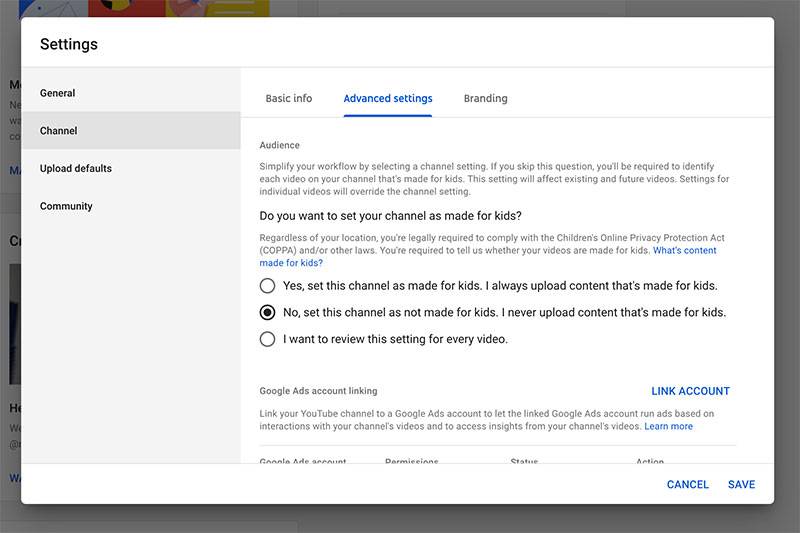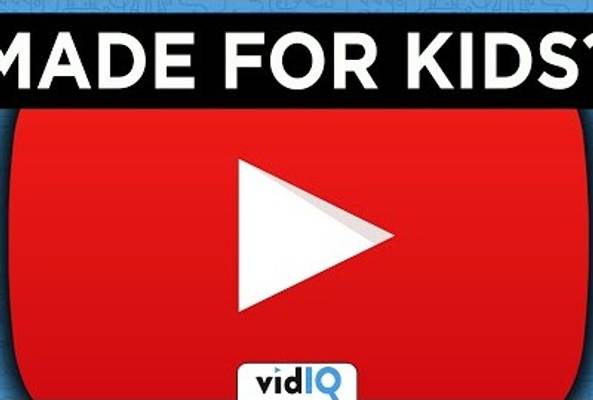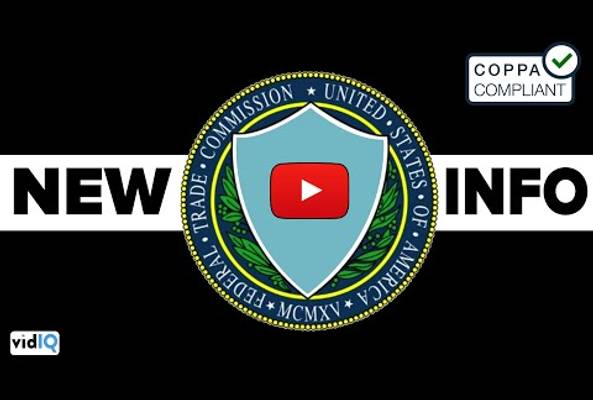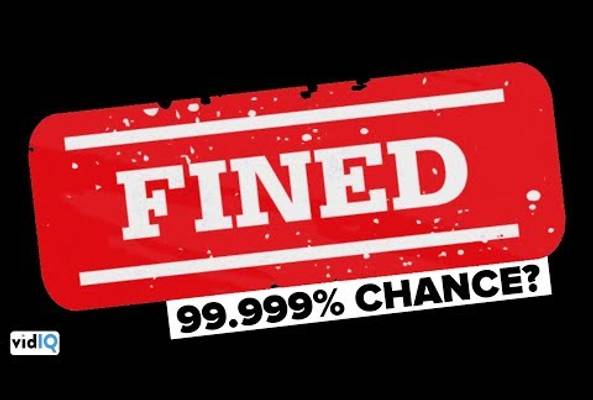Rob started out on YouTube in 2012, building up a tech channel before joining the vidIQ team. He now educates over 450,000 subscribers on the vidIQ channel which has over 25,000,000 video views. Today he is hard at work sharing everything he has learned on the YouTube platform; educating video creators on how to grow their own channels and turn hobbies into careers - just like Rob did in 2017.
COPPA, FTC and Your YouTube Channel - Everything You Need To Know!
If you are a creator, you should be aware of the changes made by YouTube around COPPA (see our ‘11 Things You Need to Know About COPPA and Kid's Content on YouTube TODAY’ for a recap).
Under the law, websites are restricted from collecting personal information from users aged under 13. Now at this point, you might be thinking, I make videos from the UK or elsewhere, why does this affect me? Well, YouTube is a US company and anyone in the world can watch YouTube content so it affects that privacy policy, and it affects you.
As part of the settlement with the FTC, YouTube was given time to get their house in order to protect children in the future, and now those changes are in full effect.
Stop Guessing. Start Growing.
Join 20M+ creators using vidIQ to get more views, subscribers, and success on YouTube.
Essentially if you are a video creator on YouTube, this is a brand new term that you have to get used to - ‘Made for Kids.’ YouTube is enforcing much stricter rules and placing the onus on you to communicate to your audience whether that content is appropriate for children.
‘Made For Kids?’ - New Settings on YouTube
If you haven't already updated your settings around the new policy, now is the time to do it:
- Go to the new Creator Studio and on the left-hand side, click on settings.
- Then go to the Channel section, followed by the Advanced Settings tab. This is the new channel audience setting which tells YouTube whether all of your content is made for kids, none of your content is made for kids or some of your content is made for kids.
- If you select yes, you will see a brief description of how this impacts your channel which we will cover in a moment. Consider this your master setting that affects all of the content on your channel. This setting will affect all current videos on your channel and all future content on your channel.

And this is not an opt-in choice, no matter where you are in the world as a video creator, you need to check this setting and determine whether or not your content is made for kids, or not. As stated on the setting, regardless of your location, you're legally required to comply with the Children's Online Privacy Protection Act and all of the laws.
Now obviously not all of your content may fall into one bucket, so you can adjust audience settings for videos on an individual basis by:
- Going to the Video Manager page, and checking ‘Videos’
- Click on the edit button and then go to ‘Audience’
- From this screen, you'll simply be asked whether the videos checked are made for kids or not.
Also, when you upload a video, you'll be asked this question and depending on how you've answered it on your channel settings, that default will be used and you can change it if you wish.
So you can't dodge the question. It's going be coming up on your channel settings and on individual videos. You must answer whether or not the content is made for kids. And if you're going to try and cheat the system and lie, YouTube have machine learning in place trying to detect whether or not your content is made for kids.
YouTube & ‘Made for Kids’ Content: Penalties for Creators
Now given YouTube's history, unfortunately, mistakes are likely to be made with the content being mislabeled as one or the other. The question for you is, if you do fall into the wrong categorization, what potential penalties are there for you as the individual video creator?
They're, potentially, quite harsh. The maximum civil penalty that the FTC may enforce for each breach could be $42,530. So in a worst-case scenario, all it would take it is 24 videos to be mislabeled on your YouTube channel to wrack up a fine of over $1,000,000.
Now there is quite a bit to unpack from that huge number. Are the FTC going to fine every single video creator that amount of money if they misrepresent their content on YouTube? And given that there are hundreds of hours of content uploaded onto YouTube every single minute, how is that going to be policed?
And to be honest, I don't think any of us have the answers to those questions right now. What everybody is saying to you right now is to air on the side of extreme caution. Make sure that your content is correctly labeled and you think about the content when you're making it as to whether or not it is appropriate for kids.
What is Kid’s Content on YouTube?
The next big question to consider is, what is kid's content? Well, these are seven things you should consider:
- What is the subject matter of the video?
- Whether children are your intended audience for the video.
- Whether the video includes child actors or models.
- Whether the video includes characters, celebrities or toys that appeal to children including animated characters or cartoon figures.
- Whether the language of the video is intended for children to understand.
- Whether the video includes activities that appeal to children.
- And whether the video includes songs, stories or poems that appeal to children.
Now I will appreciate that every single video on YouTube will garner a slightly different answer to all of those questions. And some are more clear cut than others. Baby Shark for example, yeah that's pretty much designed for children. But a full night montage of comical moments, that's a little bit more of a gray area and, unfortunately again, we don't have the answers.
The other frustration for video creators is that YouTube doesn’t necessarily have the answers either. When no longer in the realm of YouTube community guidelines, their rules, we're now into law and YouTube has stated that:
Ultimately we can't provide legal advice. So we're unable to confirm whether or not your content is made for kids. That decision is up to you taking into consideration these factors. But we want to help you follow the law as much as we can. Check out our help center and talk to a lawyer if you're still unsure whether or not your content should be marked as made for kids.
There are two things there that essentially cover YouTube's butt. In order to avoid, another $180,000,000 fine, they're making sure that you, the individual video creator, are responsible for telling your audience who that content is appropriate for.
And second of all, YouTube is not going to determine whether or not content is kids' content. If it got to that point, it would be for the law to decide. And that's why YouTube, along with everybody else who's covering this topic, is suggesting you seek legal counsel, if required. And for many of you, that's probably going be unrealistic but we have to say that.
Now, so far we've talked about the potential impact if you miscategorize your content on YouTube. However, if you tell YouTube that your videos are for kids, you also lose a significant number of YouTube features. All of these features are rooted in the collection of personal data which is exactly what YouTube need to avoid with viewers under the age of 13. And I know that for many of you video creators, this is a huge blow. It essentially means that you can't directly engage with your community because you don't know anything about them.
What if Your Content is Mislabelled as ‘Made for Kids’ on YouTube?
So far we've focused on channels that will be impacted by these changes, channels that do make content for children. But what about all of those other channels that shouldn't be affected because they don't create content for under thirteens. What if YouTube makes a mistake and it categorizes that content as made for kids? Is there any way they can appeal against that? Well, kind of.
If YouTube determines a video is made for kids you can send feedback. But what does send feedback mean? Does that constitute an appeal? And can you get YouTube to actually change the decision, once made? I think it's safe to say that while this is everything we currently know about YouTube's changes due to FTC and COPPA, we don't have enough real world examples of how this is going to impact channels.
So, whether YouTube will be able to change on appeal or what type of penalties you may get, those answers are still up in the air. What we will continue to do here at VidIQ is monitor the situation and give you all of the information as soon as we have it.
Want To Get More Views on YouTube?
If you want to take your YouTube channel to the next level and get more views on YouTube then make sure to download vidIQ. Join over 1 million other users and use vidIQ to help you research YouTube, analyze videos, audit your own channel, and take actionable steps click here to install now!
20k+ 5 Star Reviews
Ready to put this into action?
Use vidIQ to find your next video idea, pick better keywords, and optimize every upload.






